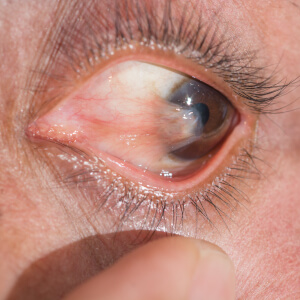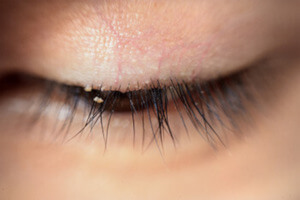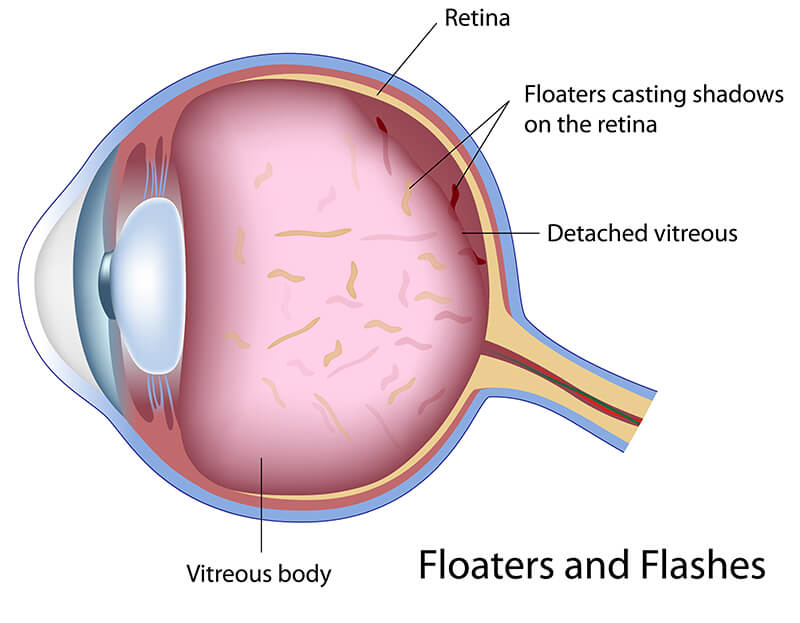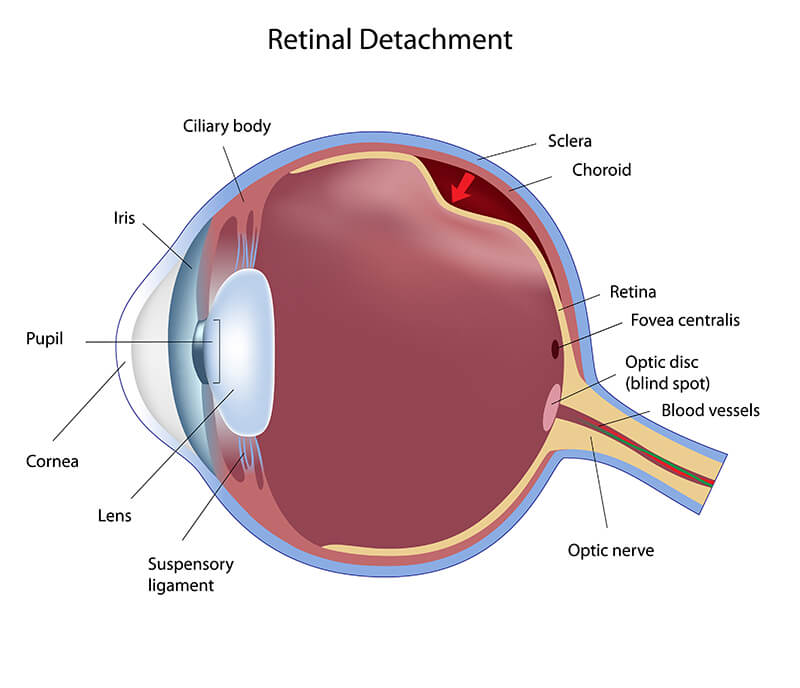Pinguecula And Pterygium

Pinguecula and Pterygium are growths on the cornea and the conjunctiva. Neither of these growths are contagious and are actually considered as fairly common. A pinguecula is a yellowish patch or bump on the conjunctiva, near the cornea. Typically, they occur on the inner part of your eye (closest to your nose). It is a change in the normal tissue that results in a deposit of protein, fat and/or calcium.
A pterygium is also known as surfer’s eye or farmer’s eye. It is a triangular-shaped growth made of fleshy tissue on the white of the eye that eventually extends over the cornea. This type of growth may remain small, or it could grow large enough to compromise your vision. Often, a pterygium forms from a pinguecula. The cause of these growths isn’t clear. Ultraviolet light from the sun is believed to be a factor, as well as dry eye and environmental elements such as wind and dust.
Blepharitis
 Blepharitis is a condition that causes the eyelids to become inflamed with oily particles and bacteria coating the eyelid margin near the base of the eyelashes. It causes irritation, itchiness, redness, and stinging or burning of the eyes. The causes of blepharitis are unknown, however, it has been associated with a bacterial eye infection, symptoms of dry eye, and certain skin conditions such as acne rosacea.
Blepharitis is a condition that causes the eyelids to become inflamed with oily particles and bacteria coating the eyelid margin near the base of the eyelashes. It causes irritation, itchiness, redness, and stinging or burning of the eyes. The causes of blepharitis are unknown, however, it has been associated with a bacterial eye infection, symptoms of dry eye, and certain skin conditions such as acne rosacea.
What are the most common symptoms of blepharitis?
These are the most common signs and symptoms to watch out for if you think you may have blepharitis:
- Redness, itching, stinging, or burning in the eyes and/or eyelids
- A greasy appearance or feeling on the eyelids
- A “sandpaper” or gritty feeling in the eye
- Light sensitivity
- A frequent urge to blink
- Excess watering in the eyes
- Sticky, swollen, or heavy eyelids
- Skin flakiness around the eyelids
- Crusted-over eyelids upon waking in the morning
- Eyelashes that fall out or grow haphazardly
Can blepharitis have other complications?
Over time, if left untreated, blepharitis can lead to several different complications.
- If the oil glands around your eyelashes become infected, you can develop a stye in your eyelid. This is very painful if it’s not treated appropriately.
- If an oil gland becomes infected with bacteria, you can also develop a chalazion. A chalazion is a blockage that causes redness and swelling in your eyelid.
- If blepharitis goes unchecked, you can also develop other issues. These can be with tear production, dry eye, and conjunctivitis.
- Over time, recurring blepharitis can also cause problems with the eyelids, like scarring. You can also end up with eyelash loss over time.
- Blepharitis can also lead to problems with your cornea, like scarring, injury, or infection.
Floaters And Flashes
If someone sees small specks or clouds moving in their line of vision, they are experiencing floaters. They are most noticeable when looking at a blank background. Floaters are small clumps of cells or material inside the vitreous, the clear, gel-like fluid that fills the inside of your eye. A common misconception of floaters is that they are in front of your eye. They are actually floating inside your eye; what you see is the shadow they cast on the retina. Floaters do not have to be circular, they can appear as dots, circles, lines, cloud, or cobwebs. Flashers are caused when the vitreous gel pulls on the retina. If you have ever been hit in the eye and then “see stars”, experiencing flashers is the same sensation. Flashers can last for several weeks or months on and off. Both floaters and flashers are more common as we grow older because of the vitreous gel changes with age.

Retinal Detachments
The vitreous typically moves away from the retina without issue, however, sometimes the vitreous pulls too hard and tears the retina in one or more places. This allows for fluid to flow through the tear causing the retina to pull away from the back of the eye causing blurry vision. A retinal detachment is serious and almost always causes blindness unless it is treated with detached retina surgery.

